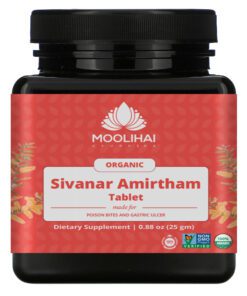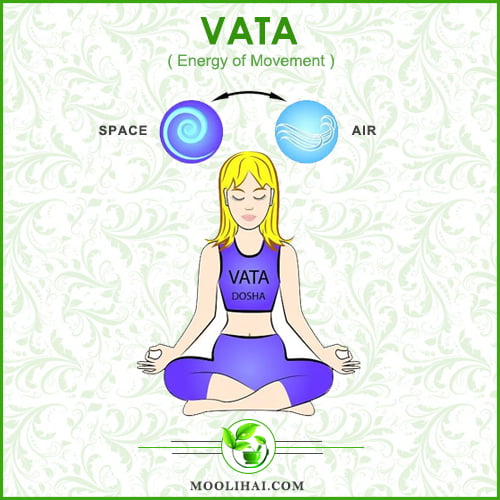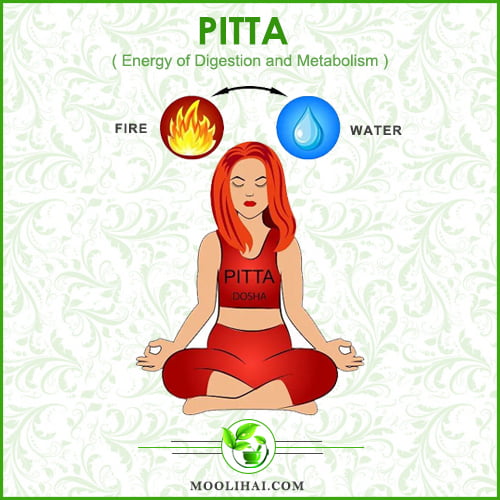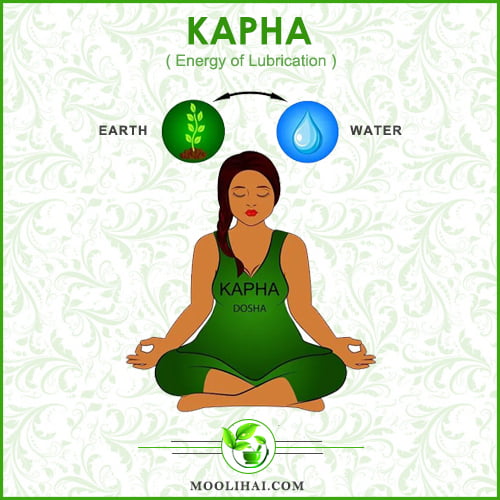Info
What is Ayurveda – Science of Ayurveda
In Sanskrit, Ayurveda means knowledge of life, i.e., the word Ayur denotes life, and Veda denotes science or knowledge. Ayurveda plays a significant role in balancing our internal body and external worlds. It was practiced in India more than 5,000 years ago, and it is said that health is based on a good balance between mind, body, and spirit.
The five senses: Sight, Sound, Smell, Taste, and Touch sense, acts as a connection between the human body and the external world. The earth and human body are created with the essential five elements: ether, air, fire, water, and earth.
In Ayurveda, these five essential elements are classified into three types of energy, and they are found in everything. In Sanskrit, these words are expressed as Vata, Pitta, and Kapha, which is explained in the below section.
Everything in the universe has its thoughts or emotions and has certain qualities. The old Ayurvedic texts categorize these qualities as gunas and it has a total of 20 Gunas i.e., ten opposite pairs of gunas (qualities).
According to Ayurveda, every living thing and all objects in the universe is said to have these gunas and doshas. The 10 opposite qualities based on the dosha are mentioned below;
10 Pairs of Opposite (Balancing) Qualities
- Dry (Ruksha) x Oily (Snigdha)
- Hot (Ushna) x Cold (Shita)
- Heavy (Guru) x Light (Laghu)
- Dense (Sandra) x Liquid (Drava)
- Sharp or penetrating (Tikshna) x Dull or slow (Manda)
- Rough (Khara) x Smooth (Shlakshna)
- Mobile (Chala) x Stable (Sthira)
- Soft (Mrudu) x Hard (Kathina)
- Subtle (Sukshma) x Gross (Sthula)
- Clear (Vishada) x Cloudy (Avila) or sticky (Picchila)
The basics of Ayurvedic treatment depends upon identifying the imbalance in gunas, and this leads to dosha imbalance which further causes various diseases. Ayurveda says that providing the opposite qualities through food will balance the dosha.
Fire element (Agni) is present in our body as the digestive fire, which converts food into body tissue and waste; and identifies the difference between nutritious material and waste product which helps in the excretion process. Fire of the body digest toxins and ensure the proper functioning of the body and soul.
Ayurveda says that each human body has different gunas and dosha. So it is important to customize preventative measures and medicines based on their unique gunas. In Ayurveda, Preventative care and treatments come under eight classifications.
- Baala chikitsa – Pediatrics
- Bhuta Vidya(Graha) – Psychiatry, Spiritual therapy
- Jarachikitsa or Rasayana – Gerontology and Rejuvenation
- Kaayachikitsa – Internal medicine & therapeutics for Healing and detoxification process
- Shalakya(Urdhvanga) Tantra – Treatment Ear, Eyes, Nose, Head, and Throat
- Shalya Tantra – Removal of things (or extra unwanted body) that cause discomfort to the human body (Surgery)
- Vajikarana — Aphrodisiac Therapy, Fertility, and Conception
- Vishagara Vairodh (Agad) Tantra – Toxicology
Panchakarma
Panchakarma is an ancient practice used to release and remove accumulated toxins from the deep tissues and balance the doshas, thus making the body healthier. Panchakarma has five natural methods for eliminating toxins.
Aasthaapana or Niruham: Treat Vata disease using Kashaya Vasti. Kashaya means decoction, and Vasti means giving medicine through the rectum, which provides relief from constipation, kidney stones, backaches, and joint pain.
Anuvaasan (Oil enema): This will aid people with diabetes, anemia, and obesity issues. It treats all Vata diseases, such as arthritis, joint disorders, constipation, urinary and reproductive disorders.
Nasyam: It indicates inhalation of medicinal oil through the nose, eliminating excess waste (blood, yellow bile, black bile, and phlegm) accumulated in the sinus, throat, nose, or head. Further, the body is massaged from the shoulders, and the area around the nose, neck, shoulders, palm, and feet. This treatment is used in curing health conditions such as sinusitis, migraine, chronic cold, chest congestion, hemiplegia, and facial paralysis.
Vamanam (vomiting): It is the best treatment for Kapha-related health issues. Vamanam eliminates Kapha, which causes excess mucus. Excess Kapha causes congestion in the lungs, cold, and cough. It also treats chronic skin diseases such as psoriasis.
Virechanam (Purgation): Virechanam is the elimination of toxic substances from the intestines. It is useful in curing jaundice and hemorrhoids. It also removes toxins (excess pitta) from the liver, gallbladder, pitta from kidneys, lungs, and sweat glands, then purifies the blood.
Ayurveda and Your Life Energy
Ayurvedic medicinal practitioners believed that everything in the universe is connected with each other; whether it is dead or alive that doesn’t matter. If your soul, mind, and body are in sync with the universe, then you will have good health. When this balance gets disrupted by some factors, your body and mind will get sick.
The factors that cause disturbance to this balance are; defects in genes, injuries, climate change, age, and feelings. Already, we have seen that five essential elements are categorized into three life forces (energies), called doshas. They are Vata dosha (space and air), Pitta dosha (fire and water), and Kapha dosha (water and earth), which controls your body mechanism. It also controls the mind, blood flow, breathing, heart function, and the ability to remove waste from your intestines. These can be disrupted by eating very quickly after a meal, fear, grief, and staying up too late without sleep.
Every human has a unique combination of the three doshas. Usually, one dosha is stronger than the other dosha, and here each dosha controls different body functions. According to Ayurveda, your body gets sick and health issues develop. These are linked to your doshas.
Vata – Energy of Movement
Vata is a combination of basic elements Space and Air. It is associated with motion for all body processes. It controls blinking, breathing, movement of muscle and tissue, pulsation of the heart, and movements in the cytoplasm and cell membranes. Balance – Vata improves creativity, quick mind, and flexibility. Unbalanced – Vata creates fear, nervousness, and anxiety. If Your body has Vata dosha, then you have to face medicinal conditions like anxiety, pneumonia, asthma, heart disease, skin problems, and rheumatoid arthritis.
The truth about people with dominant Vata: Vata dominant people are restless, active, and think fast, but get easily tired. They also have less willpower, confidence, boldness, and tolerance. And they also feel unstable and ungrounded. Vata dominants tend to earn money fastly and spend it quickly, and so they may suffer from an economic crisis. They like to eat astringent foods, but their dosha will be balanced by warm, sweet, sour, and salty tastes. Attributes of Vata dosha are cold, dry, light, rough, subtle, mobile, and clear.
For Balancing Vata:
- Keep calm and warm.
- Avoid cold, frozen, or raw foods and vegetables.
- Eat warm foods and spices.
- Keep a regular food routine.
- Need rest.
Pitta – Energy of Digestion and Metabolism
Pitta is the combination of the basic elements Fire and Water. It controls your digestion process, the metabolism to break down foods, and particular hormones connected to your appetite. It influences digestion, absorption, assimilation of nutrition, and body temperature. Balanced – pitta improves understanding capacity, sharp ideas, and intelligence.
Unbalanced – pitta causes anger, short-tempered, hatred, and jealousy. If Your body has Pitta dosha, then you have to face health issues such as Crohn’s disease, heart disease, high blood pressure, jaundice, skin rashes, burning sensation, ulceration, fever, and infections. Pitta gets disrupted when eating sour or spicy foods and spending more time in the sun.
The truth about people with dominant Pitta: Pitta dominant people are the one with medium height and rough skin. They tend to have many moles and freckles; skin is warm and less wrinkled than Vata. Hairs are silky, and they may have premature graying or hair loss. They have medium size eyes and a sharp nose which tends to be reddish at the tip.
They have a healthy metabolism, excellent digestion, and appetites. They like to eat lots of hot spicy food and cold drinks. But their unbalanced pitta can be balanced by sweet, bitter, and astringent tastes. Attributes of pitta doshas are oily, hot, light, dispersing, mobile and liquid.
For Balancing Pitta:
- Avoid overheat, steam, and oil.
- Minimize salt consumption
- Eat cool and non-spicy foods.
- Do Exercise at chill and room temperature.
Kapha – Energy of Lubrication
Kapha is the combination of basic elements Earth and Water. It supports muscle growth, body strength and stability, weight, and immune system. It is the life energy that is involved in the formation of bones, muscles, tendons, and also gives glue that holds the cells. It also supplies water to all body parts and acts as a lubricant for joints, and moisturizes the skin.
The life energy Kapha gets disrupted by sleeping in the daytime, eating sweet items, and drinking liquids with excess salt content. Balanced Kapha enhances love, calmness, and forgiveness. Unbalanced Kapha will lead to attachment, possessiveness, greed, and envy. Ayurvedic advisors believed that if your body has Kapha dosha, then you have to face health problems such as asthma, other breathing disorders, cancer, diabetes, nausea, and obesity.
The truth about people with dominant Kapha: People with Kapha as an energy source, have strength, endurance, and good stamina. The skin of Kapha dominant people is oily and smooth.
They tend to have thick skin; the body and muscles are also well developed. They have large attractive eyes with thick brows and also give you a deep and prolonged sleep. Kapha type people like to eat sweet, salty, and oily foods. However, their dosha can be balanced by astringent, bitter, and pungent tastes.
For Balancing Kapha:
- Do lots of exercises.
- Avoid heavy, dairy, iced, fatty, oily foods.
- Be active
- Eat light, dry food
- Don’t sleep in the daytime.
20 Qualities Based on Dosha
| Vata Dosha | Pitta Dosha | Kapha Dosha |
|---|---|---|
| Dry | Hot | Cold |
| Light | Light | Dense |
| Cold | Sharp (penetrating) | Stable |
| Mobile | Oily | Dull |
| Rough | Liquid | Soft |
| Subtle | Oily | |
| Clear | Cloudy (sticky) | |
| Heavy | ||
| Smooth (slimy) | ||
| Gross |
Conclusion
Through Ayurveda, it is recognized that each one in this world is unique. We act differently in many aspects of life. Everyone shows different strengths and weaknesses. Ayurveda practitioners offer health condition data based on the connection between causes and their effects of each individual. Balancing doshas and maintaining a healthy body depends on the proper diet and lifestyle. So better change your older food habit and daily routine to achieve a healthy body.


 Sivanar Amirtham Mathirai -Sivanar Amirtham Tablets - 60 Capsules
Sivanar Amirtham Mathirai -Sivanar Amirtham Tablets - 60 Capsules 




Ponnatharam Stone (Raw) | For Permanent Hair Removal
Vengai Paal | Black Bindi | Dhrishti Pottu | Vengai Pottu for Babies | 100% Natural
Dried Avaram Senna Flower / Cassia Senna Auriculata / Aavaram Poo / Tarwar / Amaltas Leaves / Senna Auriculata / Avaram Poo / Sanay / Alexandrina / Tanner’s Cassia flower
Natural Dried Moringa Flower – Moringa Oleifera – Drumstick Tree Flower – Murungai Poo – Munagaku Flower
Akasa Garudan Kilangu / Redfruit Creeper / Corallocarpus Epigaeus
Original Edible Camphor | Pacha Karpooram | Bhimseni Camphor
Saussurea Obvallata Seeds / Brahmakamal Seeds / Queen of the night / Sacred Saussurea Kon Kapfu / Brahma Kamalam / Nishagandha
Insulin Leaf Powder / Chamaecostus Cuspidatus / Costus Pictus / Spiral Ginger / Insulin Powder / Costus Igneus
Achu Pottu for Babies | Bindi Mould Set | Baby Seratta – 1 Set
Kaunch Beej Powder |Poonaikali | Velvet Bean Powder | Mucuna Pruriens | Kapikacchu | Natural Nervine Tonic & Muscle Builder
Aalam Pazham / Banyan Fruit Powder / Ficus Benghalensis / Marri Palu / Bargad / Dodda Alada Mara / Peraal / Vat Vriksha Powder
Traditional Vasambu Valayal for Babies | Calamus Bracelet | 100 % Pure & Natural